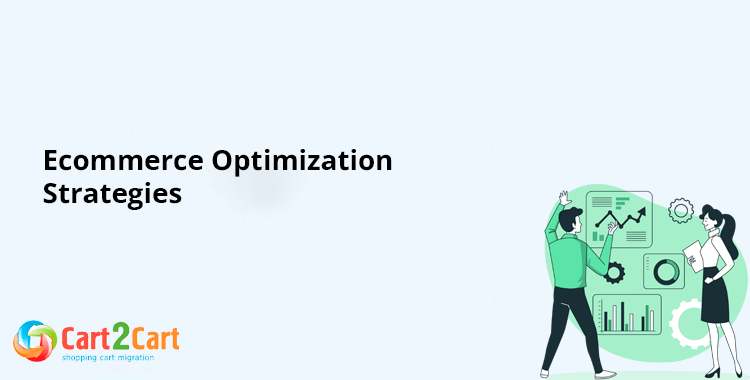 In the fast-paced digital marketplace, online businesses must continually optimize their ecommerce websites to meet consumer expectations and stay ahead of the competition. Effective ecommerce website optimization strategies enable an online store to improve user experience, enhance customer retention, and maximize revenue. In this guide, we’ll dive deep into proven techniques for optimizing an ecommerce website, covering essential strategies, a comprehensive checklist, and examples of successful implementations for online businesses.
In the fast-paced digital marketplace, online businesses must continually optimize their ecommerce websites to meet consumer expectations and stay ahead of the competition. Effective ecommerce website optimization strategies enable an online store to improve user experience, enhance customer retention, and maximize revenue. In this guide, we’ll dive deep into proven techniques for optimizing an ecommerce website, covering essential strategies, a comprehensive checklist, and examples of successful implementations for online businesses.
Understanding Ecommerce Optimization
Before diving into strategies, it’s essential to understand what ecommerce optimization entails. In the simplest terms, ecommerce optimization involves implementing various techniques to improve website functionality, user experience, and overall performance to drive sales. Effective optimization strategies address every aspect of an ecommerce store, from SEO and speed optimization to mobile responsiveness, ensuring that mobile users have a seamless experience. Additionally, well-crafted product descriptions play a crucial role in conversion, helping customers make informed decisions and boosting overall engagement.Why Ecommerce Optimization Matters
Optimized ecommerce websites not only provide a better user experience but also rank higher on search engines. For an online business, enhanced visibility attracts more potential customers, which can increase both sales and revenue. In today’s competitive landscape, an online business with a well-optimized website has a better chance of standing out, engaging visitors, and achieving long-term growth.
Key Ecommerce Optimization Strategies
Effective ecommerce optimization goes beyond basic website improvements. Here are core strategies to enhance your online store's performance in 2024.1. Improve User Experience (UX)
User experience is at the heart of successful ecommerce. By simplifying navigation, providing easy access to information, and ensuring an intuitive checkout process, businesses can improve customer satisfaction and conversion rates. Some UX optimization tips include:- Streamlined navigation menus.
- Clear product categorization.
- Optimized search functions.
- High-quality product images and descriptions.
2. Focus on SEO for Ecommerce
Search engine optimization (SEO) is essential for driving organic traffic to your ecommerce site. An optimized website ranks better on search engines, increasing visibility and attracting potential buyers. Key SEO practices for ecommerce include:- Keyword optimization in product titles and descriptions.
- Optimized meta tags and URLs.
- Using high-quality images with ALT text.
- Developing relevant blog content.
3. Implement Conversion Rate Optimization (CRO) Techniques
Conversion Rate Optimization (CRO) aims to increase the percentage of website visitors who complete a purchase. Some effective CRO tactics include:- Adding clear call-to-action (CTA) buttons.
- Reducing the steps in the checkout process.
- Offering personalized product recommendations.
- Providing customer reviews and testimonials.
Best Practices for SEO in Ecommerce
SEO is one of the most crucial aspects of ecommerce optimization strategies. Implementing these techniques helps increase site traffic and makes it easier for customers to find your products.Keyword Research and Integration
Conduct thorough keyword research to understand what potential customers search for. Integrate relevant keywords naturally within product pages, descriptions, and blog content.Optimizing Meta Tags
Meta tags, including title tags and meta descriptions, are essential for SEO. Each product page should have unique meta tags, and they should accurately describe the product while including relevant keywords.Content Marketing
Creating informative blog content helps attract traffic and supports SEO efforts. Articles on topics related to your products provide value to customers while building brand authority.
Improving Website Performance and Speed
Website speed significantly impacts user experience and can affect search engine rankings. Online shoppers expect fast-loading pages, and a slow website can lead to higher bounce rates and lost sales.Optimizing Images and Videos
Large images and videos are common culprits of slow website speeds. Compress images without sacrificing quality, and use appropriate formats such as WebP.Minifying Code
Reducing the size of CSS, JavaScript, and HTML files through minification can help improve website speed. This process removes unnecessary characters from the code, making it load faster.Using a Content Delivery Network (CDN)
A CDN distributes website content across multiple servers, reducing the time it takes for users to load your site from different locations worldwide.Boosting Conversion Rates
Conversion rate optimization (CRO) focuses on turning website visitors into paying customers. Here are some CRO strategies tailored for ecommerce:Simplified Checkout Process
A lengthy or complicated checkout process can deter customers from completing purchases. Offer a guest checkout option and reduce the number of required fields.Personalized Product Recommendations
Personalization plays a significant role in modern ecommerce. Show customers recommendations based on their browsing history and previous purchases.Exit-Intent Popups
When a user is about to leave your website, an exit-intent popup with a discount code or special offer can encourage them to stay and make a purchase.Using Data-Driven Decision Making
Analyzing data enables businesses to make informed decisions and continuously improve their ecommerce platform. Use the following data-driven approaches to refine your optimization strategies.| Data-Driven Approach | Benefits |
| A/B Testing | Helps determine the most effective web design |
| Customer Surveys | Provides insights into customer needs |
| Sales Analytics | Highlights best-selling products |
| Heatmaps | Shows areas of user interaction |






